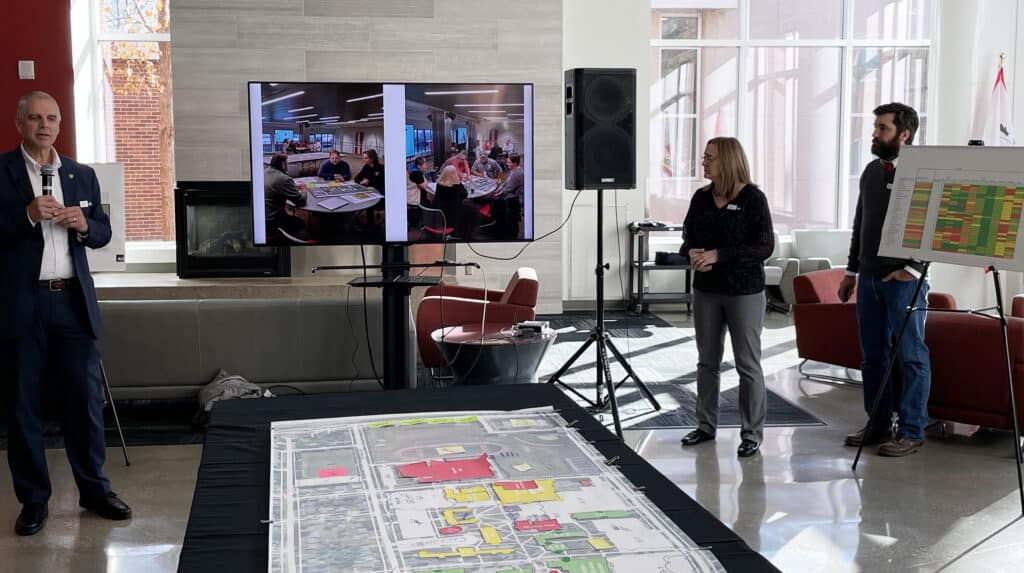MOORHEAD — A long range, “ambitious” comprehensive facilities plan for Minnesota State University Moorhead was unveiled Tuesday, Nov. 1, promising carbon neutrality, financial prosperity and the “technology of tomorrow.”
Patrick Thibaudeau, sustainability officer at JLG Architects, spoke about the proposed changes to a group of more than 50 people at the Comstock Memorial Union Sun Garden Lounge.
Saying it was the “right time to think big,” Thibaudeau said that according to the plan the campus will generate its own electricity and heating, reduce building areas, sell off some land, become carbon neutral and provide a positive learning environment on campus.
“What you see in front of you is a planning tool we use to envision the future,” Thibaudeau said, adding that architects tried to epitomize a “culture of connecting people to each other” and “honor the heritage of what is here, while preparing for the technology of tomorrow.”
Although enrollment is decreasing at MSUM and across the nation, “We wanted to understand that and make sure the plan reflected the actual situation,” Thibaudeau said.
“More people are wanting part-time learning opportunities, and those considerations are part of the plan,” he said.
The facilities plan is updated every five years, and this version took a year to put on paper, Thibaudeau said.
“We set some ambitious targets,” he said. “We can say that this plan is achievable, but it will make you sweat a little to get it done.”
The plan includes gaining $1.3 million in potential funds from the sale of land north of Sixth Street and creating more prairie vegetation on campus.
The plan would lower operating costs by about $6.6 million, reduce campus land space by 10% and defer maintenance costs by $155 million, Thibaudeau said.
Additionally, more than 8,000 tons of carbon emissions would be avoided each year, he said.
According to the company’s planning tool, which was laid out on a long table, some buildings marked in red on campus would be torn down. Among those were Nemzek Hall, Murray Hall, King Hall, Owens Hall and Nelson Hall.
Buildings marked in yellow needed a face-lift, and the buildings in green would remain as-is.
“I am very excited to implement the updated comprehensive facilities plan for our university, and I appreciate all of the time and effort that has gone into the process from our steering committee and many others,” said Brenda Norris, MSUM executive director of facilities management and steering committee.




